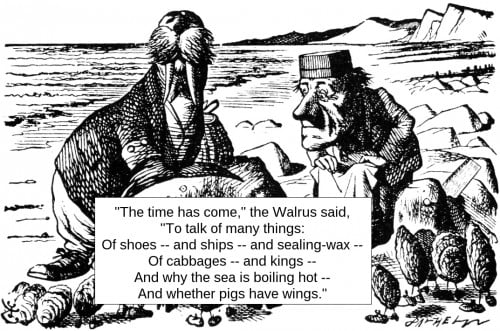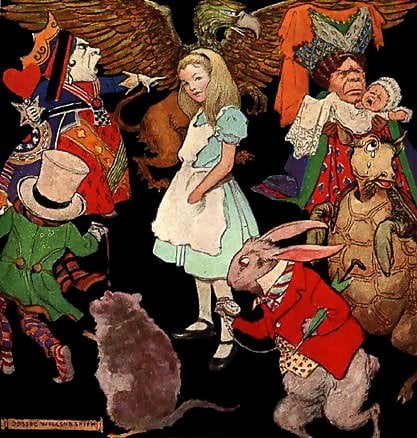Your instructor just told you that your next writing assignment will be a reflective essay.
Reflective essays are about you, so you go home and take a good long look in the mirror.
Before you start writing about what you see on the surface, keep in mind that a reflective essay involves more than just a cursory glance. It requires taking a deeper look at yourself, stepping through the looking glass, so to speak, to discover and show important parts of yourself to your readers.

Below, I’ll show you how to create a killer reflective essay outline, and I’ll even give you a downloadable template you can use to make your own outline.
What Is a Reflective Essay and How Is It Different from Other Essays?
So you may be asking yourself what a reflective essay is exactly. You’ve written many other types of essays for many different classes, so how is this any different?
First things first… a reflective essay is one in which you reflect on your personality, places you’ve been, people you’ve met, or experiences that have influenced you. This type of essay lets you tell the reader who you are and what/who has made you that way.
Unlike most other types of essays you may have written, reflective essays typically don’t deal with researching facts and figures. They are much more personal in nature and can be more fluid in structure and style.
It can be tempting to just jump right into writing, but hold on! A good reflective essay can be a great reflective essay with the proper planning.
Using a Reflective Essay Outline to Organize Your Thoughts

The goal of any essay is to write clearly and concisely about whatever topic you choose or are assigned. Unfortunately, with reflective essays, some people tend to get a little disorganized and start sounding like the Walrus, talking about anything and everything in no particular order.
Don’t be like the Walrus!
Using a reflective essay outline can help your writing in a few ways
- An outline can help lay out exactly what details you want to use before you start writing. This is tremendously helpful because you won’t end up on your last paragraph and suddenly realize that you forgot to include a crucial element or two.
- An outline gives you a clear roadmap instead of curvy paths and dead ends. You don’t have to wonder what’s supposed to come next because it’ll all be in the outline. In other words, you won’t have to spend time “in Wonderland.”
- Because you can look at your reflective essay outline and follow it as you’re writing, ultimately you’ll save some time in your writing. Second-guessing what comes next, in what order the supporting details should go, or going back for big revisions because you forgot something important are all wastes of time.
Are you convinced yet that creating a reflective essay outline is the best option?
Good! Now let’s get to actually making that outline!
How to Craft a Good Reflective Essay Outline
Because the subject of reflective essays is different from that of, say, an argumentative essay, the structure and organization can also be quite different. However, some rules still apply. To start organizing, your reflective essay outline should include sections for the introduction, body and conclusion.
For the purposes of giving examples, let’s say Alice just got back from her adventures in Wonderland and is working on a reflective essay outline to tell about her experience there.

Introduction
 As with any essay, your reflective essay should begin with an introduction. The parts of your introduction to include in your outline are:
As with any essay, your reflective essay should begin with an introduction. The parts of your introduction to include in your outline are:
- The hook: you want to grab your reader’s attention from the very start. If you’re telling about an experience, give a quick preview of the most exciting part of that story.
- The thesis statement: In a reflective essay, the thesis statement will usually include a brief statement of what your essay is about as well as how the specific person, place, or experience has influenced you. You will expand on this later, so don’t give away too much in the beginning.
Alice’s introduction might go something like this:
I don’t know how I had gotten myself into such a mess, but I found myself running down a seemingly endless path with the Red Queen’s entire court shouting, “Off with her head!” I had long yearned for adventure and excitement, but my time in Wonderland made me realize that adventure comes with some serious risks.
Body
 The next part of your outline is perhaps the most important. Without your reflective essay outline, the body can get muddled and confusing. I can’t tell you exactly how to organize the body of your essay because every essay is going to be different. However, I do have a couple of tips.
The next part of your outline is perhaps the most important. Without your reflective essay outline, the body can get muddled and confusing. I can’t tell you exactly how to organize the body of your essay because every essay is going to be different. However, I do have a couple of tips.
- If you are writing about an experience or an event, use a chronology that makes sense. It doesn’t have to be completely linear, but if you jump around in the timeline too much, it can confuse both you and the reader. Laying out the important parts in the outline will help you figure out in what order to put everything.
- No matter what you’re writing your reflective essay about–an experience, person or place–you should include the impact it has made and what, if anything, you learned. This should be at least as long of a section as the description of the event, person or place. It’s what shows off who you are and it’s what the reader will be most interested in.
The body paragraphs of Alice’s reflective outline may look something like this:
- Following the white rabbit down the rabbit hole
- Description of what happened
- Learning to look before I leap
- Meeting the Caterpillar
- Description of what happened
- I learned how to control my size
- I started to realize just how strange the people were in Wonderland
- Mad Tea Party
- Description of what happened
- Although a lot of fun, the tea party was very stressful
- The people I met were progressively crazier
- Croquet with the Red Queen
- Description of what happened
- It’s very hard to play croquet when the other person is cheating and threatening to behead you
- It was at this point when I realized that Wonderland had no rules, and that a world without rules is insane
As you can see, Alice’s timeline includes different events within the entire experience and with a moment of reflection on each. The final lesson learned is the epiphany–the aha! moment.
Your outline does not have to look just like this. It could be a summary of the entire experience, followed by what you learned from it. Like I said, every essay is different.
Conclusion
 The conclusion of your reflective essay should be the finishing touch that brings the whole piece of writing together nicely. Include a brief summary of your main points (as stated in the body paragraphs), as well as the overall takeaway from your reflection.
The conclusion of your reflective essay should be the finishing touch that brings the whole piece of writing together nicely. Include a brief summary of your main points (as stated in the body paragraphs), as well as the overall takeaway from your reflection.
For example, Alice’s conclusion would be similar to this:
The White Rabbit, Caterpillar, Mad Hatter, and the Red Queen are certainly faces that I’ll never forget. They each contributed to the sheer madness of Wonderland. But those people–that madness–made me thankful for the peace and security of my own home and family and its rules.
More Resources to Help with Your Reflective Essay Outline
I hope you have a better understanding of why and how to draft a good outline. To give you a bit of extra help, here’s a downloadable reflective essay outline template.
This outline template follows a 5-paragraph format, but you can add paragraphs and rearrange the body paragraphs to fit your needs. Just fill in the blanks with your own information, and you’ll be one step closer to a stellar essay.
Need more inspiration? Check out these reflective essay examples.
If you’re looking for topic ideas, check out 15 Reflective Essay Topics to Inspire Your Next Paper.
Good luck!